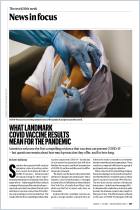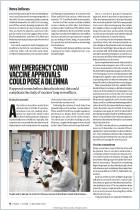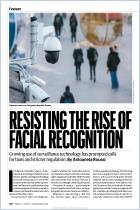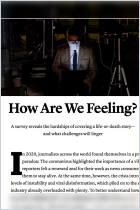
Article
Making Sense of Coronavirus Mutations
Different SARS-CoV-2 strains haven’t yet had a major impact on the course of the pandemic, but they might in future.
Nature,
2020
Read or listen offline
1×
Recommendation
Research teams around the world are studying mutations in the SARS-CoV-2 virus to discover whether it’s becoming more deadly and contagious. The mutations happen slowly, as is typical for coronaviruses. Since most humans are not yet immune to it, scientists think the virus is not currently threatened enough to evolve other than by chance. Researchers hope to pinpoint better ways to attack the virus with antibodies and vaccines, before it adapts and mutates in more concerning ways.
Take-Aways
About the Author
Ewen Callaway is a London-based writer for Nature.
By the same author
Learners who read this summary also read
Book
Book
Article
Article


















Comment on this summary or 开始讨论